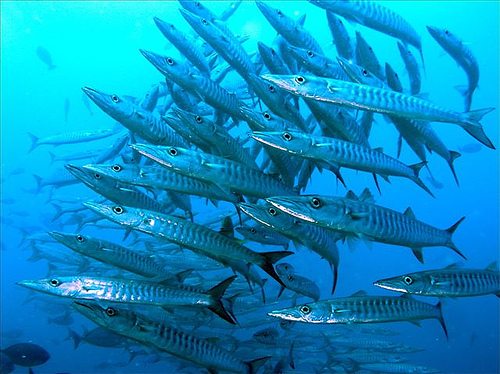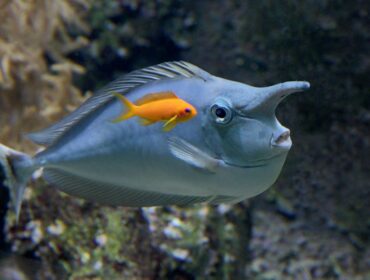Ciguatera poisoning is a potentially dangerous form of food poisoning caused by consumption of certain tropical reef fish particularly Barracuda. The poison is produced by a certain variety of a tiny marine organism known as a Dinoflagellates which are tiny unicellular marine plankton which typically grow on marine algae, sea grass and sea weed and are consumed by smaller herbivorous reef fish when they feed on the algae and grass. These fish are in turn eaten by larger carnivorous fish where the Ciguatoxin builds up in a process known as bioaccumulation. Thus the larger fish at the top of the food chain, namely barracuda, snapper, moray eels, groupers, triggerfish and amberjacks are known to cause ciguatera poisoning, although many other species have been found to cause occasional outbreaks of toxicity. Ciguatera toxin is harmless to fish but poisonous to humans. The toxin is odorless and tasteless, and it is heat-resistant, so cooking does not destroy it. More than 60,000 people get ciguatera poisoning each year, worldwide.
The primary symptoms of ciguatera poisoning are through a variety of gastrointestinal and neurological effects. Nausea, dizziness, itchy skin, diarrhea and dryness of the mouth are common. Neurological symptoms such as headaches and hallucinations may also occur which the patient feeling a metallic or peppery taste in the mouth, and reversal of hot and cold sensations which is a condition known as allodynia where an ice cube would feel burning hot and vice versa. Symptoms can last from weeks to years as the toxin is absorbed into the body’s fat tissues and slow released over time. Affected people have been known to suffer the effects of the toxin 2-3 years after the initial poisoning. Unfortunately there is no effective treatment for ciguatera and most treatment involves supporting the body’s recovery rather than directly reducing the toxic effects. Although not common, there have been a few reported deaths caused by ciguatera which otherwise isn’t lethal.
Ciguatoxin is found in over 400 species of reef fish and there is no easy way to tell if a fish is toxic without a lab chromatography test, although there are several ‘folk’ methods of detecting ciguatera none of which have been proven scientifically to be accurate. Hawaiians believe that if a small piece of the fish is placed on an ant-hill, the ants who can detect the toxin will either chose to consume the fish or stay away from it thereby letting you know if it is safe to eat or not. Others believe that if a silver coin is placed under the fish, a toxic fish will tarnish the silver; however none of these methods have been proven credible.
People from the Caribbean and Indo-Pacific belt are especially susceptible to ciguatera since their diets rely heavily on locally caught reef fish. Several people don’t even realize or diagnose the symptoms to ciguatera and pass off symptoms as ‘bad fish’ or food poisoning. There have been recent attempts at creating home test kits for testing if the fish is safe, and cigua-check is one such brand currently available in the market to check contamination levels of fish. Some say the best way to avoid ciguatera poisoning is to steer clear away from eating any kind of large tropical reef fish and avoid barracuda altogether.


